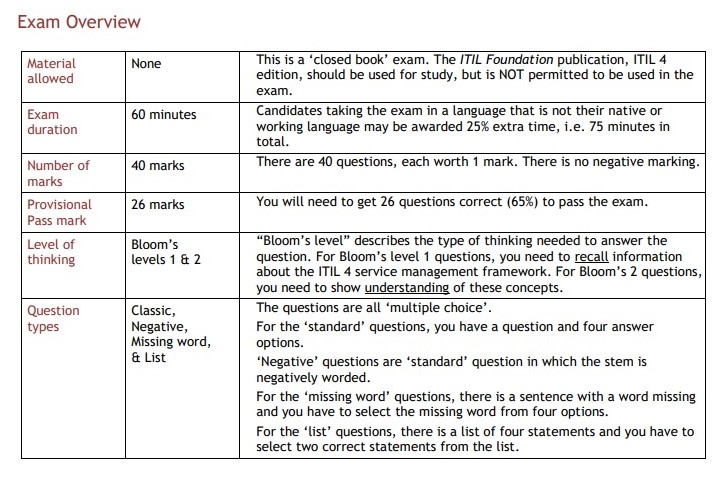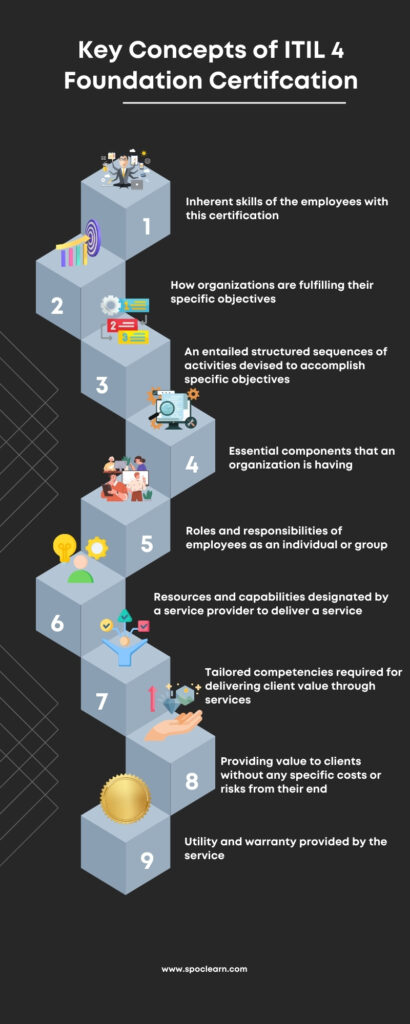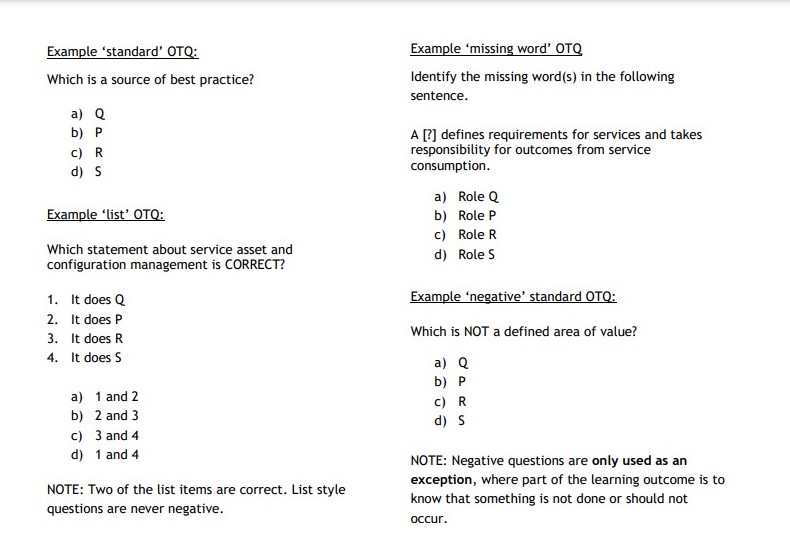Table of Contents
ToggleITIL 4 Foundation certification is ideal for anyone who has a keen interest in key concepts of IT and digital service delivery. Accredited by Axelos, ITIL 4 Foundation certification presents a comprehensive operational framework for developing, delivering, and continuously enhancing technology-driven products and services from start to finish. SPOCLEARN’s ITIL 4 Foundation course by Axelos will help you master the ITIL 4 framework and optimize tech-enabled services in today’s corporate world. Keep scrolling to learn about the ITIL 4 Foundation exam and study guide.
Is ITIL 4 in demand?
In the Service Management Industry, business leaders are always looking for L1 candidates with an ITIL 4 Foundation certification. Similarly, it can act as a foundational platform for aspiring individuals seeking entry-level positions in IT, demonstrating to employers your dedication to acquiring and implementing top industry standards.

Here are the reasons why you should go for an ITIL 4 Foundation Certification:
- The ITIL 4 certification will give you a thorough understanding of how IT and digital service organizations operate smoothly.
- You will get hands-on experience with how cultural or behavioral principles guide collaboration and optimize ultimate productivity.
- ITIL 4 certification will guide you to evaluate the value streams to increase speed and efficiency.
- Also, you will get a wide exposure to the commonly-used service management terms and concepts.
ITIL 4 Foundation Exam Format
- No. of Questions: 40
- Type: Multiple choice
- Passing marks: 26 out of 40 marks required to pass (65%)
- Time: 60 minutes
- Closed book

Image Source: Axelos
Beyond the exam format, you also need to understand the exam concept of the ITIL 4 Foundation training program. The core of ITIL comprises five fundamental components rooted in guiding principles. Below are key ITIL concepts and principles:
- Delivering paramount value to consumers.
- Optimizing assets and capacities to the fullest extent.
- Ensuring the provision of services that are both valuable and reliable.
- Strategically planning processes with specific objectives in focus.
- Precisely defining responsibilities for each task.
While you start preparing for the ITIL 4 exam, you should be aware of the key concept of this training program and why industries prefer ITIL 4 Certified professionals. With a well-defined roadmap and a solid grasp of the fundamentals, success on the initial attempt becomes readily achievable. When preparing for ITIL certifications, it’s crucial to familiarize yourself with the key terms, outlined below:

- Capabilities: These refer to the inherent skills or aptitudes that an organization employs alongside its resources to generate value.
- Functions: These represent autonomous divisions within an organization established to fulfill specific objectives, typically comprising a group of individuals and their associated equipment.
- Processes: These entail structured sequences of activities devised to accomplish specific objectives. Now, there are four primary attributes of Processes; they transform inputs into outputs, deliver outcomes to specific stakeholders, are measurable, and are triggered by specific events.
- Resources: These encompass the essential components contributing to service, including financial assets, equipment, time, and personnel.
- Roles: These denote defined sets of responsibilities and privileges, fulfilled either individually or collectively by groups.
- Service Assets: Also referred to as assets, these encompass resources and capabilities designated by a service provider to deliver a service.
- Service Management: This pertains to the specialized competencies required for delivering client value through services.
- Services: These involve providing value to clients without necessitating them to undertake specific costs or risks.
- Utility, Value, and Warranty: The value of a service comprises two dimensions: utility and warranty. For services to be deemed valuable, they must offer both utility and assurance.
ITIL 4 Foundation Certification Syllabus
Domain 1: Understanding the key concepts of service management
Domain 2: Knowing how the ITIL guiding principles can help an organization adopt and adapt service management
Domain 3: The Four Dimensions of Service Management
Domain 4: What is the purpose and components of the ITIL Service Value System
Domain 5: What are the activities of the Service Value Chain and how they are interconnected
Domain 6: Knowing the purpose and key terms of 15 ITIL Practices
Domain 7: Overview of 7 ITIL Practices

ITIL 4 Foundation question paper looks like this:

Image source: Axelos
Tips to pass the ITIL 4 Foundation Exam
Numerous resources are available to aid in preparation for the ITIL 4 Foundation exam. However, due to the challenging nature of this certification, it’s imperative to exercise caution when selecting resources. Ensure that the chosen resources align with your current level of understanding. Here are some tips to help you successfully navigate the ITIL 4 Foundation exam:
1. Modules of Capability and Lifecycle
While intermediate ITIL certifications demand a deeper understanding of each lifecycle and capability module, foundational knowledge is crucial. Enroll in ITIL 4 Foundation Training to grasp the fundamentals and comprehend each stage of the ITIL lifecycle and capability modules. Stay acquainted with relevant abbreviations and terminology.
2. Efficient Time Management
Familiarize yourself with the ITIL 4 Foundation certification exam framework. Utilize official sample papers and practice questions for exam preparation. Manage your time effectively during practice exams to avoid missing deadlines. Lack of time management is a common cause of exam failure, so practice extensively to mitigate this risk.
3. ITIL Keywords
Correctly identifying and utilizing ITIL keywords such as service strategy, design, transition, and implementation is crucial for exam success. Familiarize yourself with these keywords and their associations with other ITIL model terms.
4. Read the ITIL 4 Foundation Study Guide
Obtain the book from the Office of Government Commerce, which presents the five ITIL 4 Foundation modules resembling a lifecycle. Purchasing the entire suite is more cost-effective than acquiring each module separately. Additionally, ensure ample time for comprehensive study of the material to enhance understanding and accuracy in answering exam questions.
5. ITIL 4 Mock Tests
Engage in practice tests to build confidence and aim for scores exceeding 26 out of 40. Commence the exam by addressing easier questions first, and following instructions for marking answers accurately.
6. Certification from Accredited organizations
While preparing for the ITIL 4 Foundation, always pursue an ITIL 4 certification that is accredited by the governing body, this way you will get a proper idea about the updated syllabus, procedure, exam pattern, and so on. Spoclearn is an Accredited Training Organization of PeopleCert (ID:7822) to deliver ITIL 4 Foundation certification training for both individuals and enterprise teams globally.
Add-on Tips for a Steady ITIL 4 Foundation Exam
- Explore all available options to find the information needed.
- Begin by acquainting yourself with the subject matter to facilitate a smooth start when the course commences.
- During training, ask questions freely and seek clarification as needed.
- Thoroughly understand the concepts to avoid being caught off guard by exam questions.
- Don’t be discouraged if concepts aren’t immediately clear; understanding may develop gradually.
- Take detailed notes, especially on challenging concepts, to aid in comprehension.
- Utilize real-world examples and inquire about the applicability of ITIL 4 to your workplace.
- Approach exam questions from an ITIL perspective during test-taking.
- Take advantage of practice exams and review incorrect answers for improvement.
- Consider using the ITIL 4 app for additional exam preparation.
- Address areas of difficulty before the exam, but trust initial instincts and avoid changing answers unless certain of an error.
Conclusion
SPOCLEARN’s ITIL 4 Foundation Certification is one of the most in-demand job-oriented courses that learners are pursuing. Learn from certified SMEs and get exposure to hands-on real-world applications. Call +1908-293-7144 or email [email protected] for more information on the ITIL 4 Foundation Certification course.
